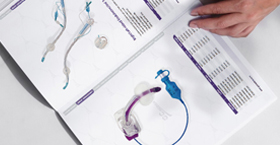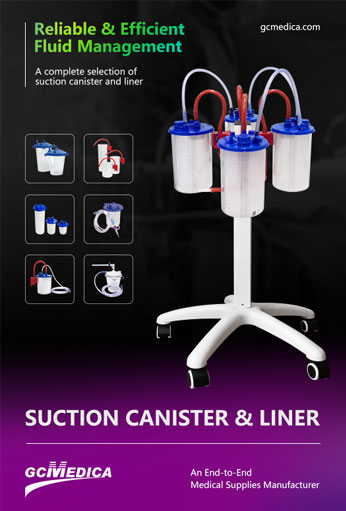Suction canister sizes play a critical role in ensuring efficient fluid management across a variety of clinical settings. Available in a spectrum of capacities—commonly ranging from 200 mL to 4,000 mL—these canisters allow healthcare providers to select the most appropriate container based on the anticipated volume of bodily fluids, irrigation solutions, and surgical waste. Smaller canisters (200 mL–500 mL) are often deployed in outpatient procedures or minor wound debridements, where fluid output tends to be minimal and rapid turnover is essential. Mid-range canisters (800 mL–1,500 mL) strike a balance between portability and capacity, making them ideal for bedside suction in general wards or emergency rooms. For high-volume requirements—such as major surgical theaters, intensive-care units, or specialized respiratory therapy—large canisters (2,000 mL–4,000 mL) minimize the need for frequent emptying, thereby reducing workflow interruptions and exposure risk.
Beyond sheer volume, canister size influences system compatibility, ease of monitoring, and disposal protocols. Compact canisters integrate seamlessly with portable suction units and offer quick-change mechanisms for rapid replacement. Mid-size models, often equipped with graduated transparency and color-coded lids, facilitate precise measurement and visual differentiation. Large canisters, meanwhile, feature reinforced construction and ergonomic handles to support safe handling of heavier fluid loads. Many designs include universal Luer-lock or quick-connect fittings to ensure cross-vendor compatibility, reducing procurement complexity. Sterility is maintained through gamma-irradiated packaging, while built-in overflow protection and secure snap-lock or screw-cap closures safeguard against leaks.
Selecting the right canister size enhances patient safety by reducing the likelihood of overflow, streamlines nursing workflows by aligning container capacity with clinical demands, and supports regulatory compliance with standardized handling and disposal of biohazardous waste. When planning supply inventory, healthcare facilities should map procedural fluid-output data against available canister sizes to optimize stock levels, minimize waste, and control costs—ultimately contributing to both clinical efficacy and operational sustainability.
Below is a summary of common suction canister sizes and their typical applications:
| Capacity (mL) | Typical Use Case | Key Features |
|---|---|---|
| 200–500 | Outpatient procedures, minor wound debridement | Compact design, rapid-change fittings |
| 800–1,500 | Bedside suction in wards, emergency rooms | Graduated markings, color-coded lids |
| 2,000–3,000 | Operating rooms, high-volume fluid evacuation | Reinforced body, ergonomic handles |
| 4,000 | Intensive-care units, specialized respiratory care | High capacity, reduced emptying frequency |
| Custom sizes | Pediatric or niche procedural needs | Tailored volume, specialized connector options |
In summary, selecting the optimal suction canister size not only ensures uninterrupted procedural flow and accurate fluid monitoring but also enhances safety and compliance throughout clinical operations. By aligning canister capacities with specific procedural demands, healthcare facilities can minimize waste, reduce infection risks, and improve overall efficiency.
| Suction Canisters | Suction Liners | Accessories > |


 Français
Français Español
Español Products
Products

 About Us
About Us












